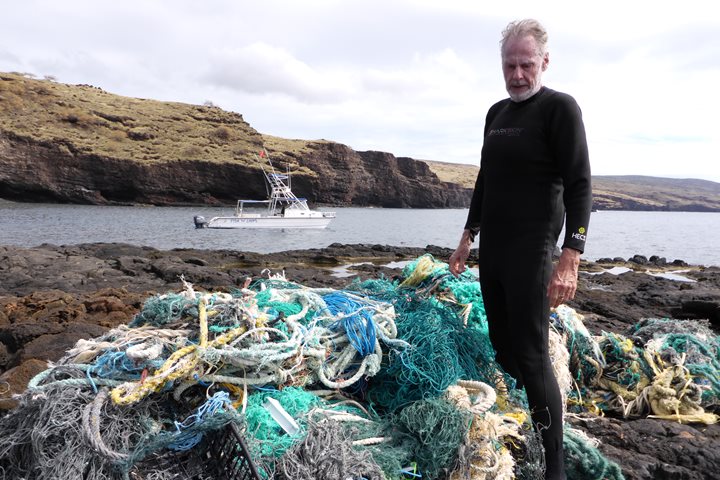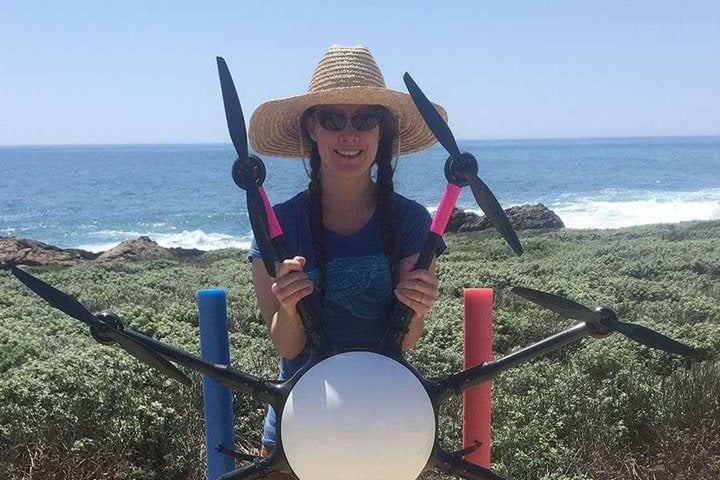Call +1.800.397.3348 or contact your travel advisor
- WorldView
- 5 Min Read
- 31 Jul 2019
The Journey of an Entrepreneur: 40 Years with Sven Lindblad
In July 1979, Sven Lindblad launched Special Expeditions—a division of Lindblad Travel, and the precursor to Lindblad Expeditions. Those early years spent growing and shaping the business were at times exasperating, and sometimes frightening—but, ultimately, they were incredibly fun and hugely satisfying. Sven took a moment to reflect on the past 40 years—and to look forward to an even more exciting future for the company. Get Inspired By Photos, Videos, Webinars, Stories, And Exclusive Offers. Sign Up
What was the inspiration for Special Expeditions?
Living as a photographer in East Africa in the 70s, and spending a lot of time in the Serengeti. I developed an absolute addiction to large, wild places. And there’s a direct correlation between the Serengeti and the sea; the Serengeti is basically a sea of grass.
Could you share one of your favorite memories from your Special Expeditions years?
When I look back over 40 years of Lindblad Expeditions there are of course many memorable times. But there's one particular moment in 1987, (simultaneously exciting and a year from hell). Well, it's a miracle we survived!
I had been on the Sea Cloud in Tahiti and flew straight to London to begin our inaugural voyage on the M.S. Polaris circumnavigating the British Isles. By this time, money had really pretty much run out. The Polaris was on a long-term bareboat charter and I worked out a deal with the owners to hold off payment. A week into the voyage we were approaching the dock at Lerwick in the Shetland Islands. It was windy and the approach required coming in with speed then turning just before reaching the dock and gliding in. The captain was very experienced and had spent a lot of time in very harsh conditions, so this was nothing.
However, when he put the controls in reverse the ship accelerated forward. There was nothing he could do, and in order to avoid ripping apart the side of the ship, he steered the bow straight into the concrete dock, warned all aboard to brace, and hit the dock with 7 knots speed. Mercifully, no one was injured except an electrician who didn’t heed the announcement, was flung down a stairwell and broke an arm.
Once the ship was secured the captain and I went down to the bow. There I looked through a gaping gash big enough to drive a car through. I thought my world had just crumbled. But I soon realized that Lerwick was about the best place in the world to have such an accident as there was all manner of repair ability due to the offshore oil industry. Within a couple of hours we had a plan: two days for our guests to thoroughly explore the island and 48 hours of nonstop work to weld the bow back together.
The weather was perfect, the guests excited, and the Polaris became the island's main attraction with nearly everyone coming by for a look. Forty-eight hours later we sailed. The guests had a very special time and were treated like family by the locals, the bow looked fabulous, and the problem in the system fully repaired. I was jubilant, and felt a bit like a cat rapidly using up my lives.
We had two uneventful months except for the adventures on our ships and in August I took a vacation with my family in Kenya. On our return to JFK airport a voice came over the intercom, “Would Mr. Lindblad please call Pamela Fingleton immediately!" My heart sunk—this could not be good—but that’s for another chapter.
When did your eco-awakening take place?The notion of green living is part of my DNA. I was brought up with the eco-stewardship sensibility, so it was just baked in from the very beginning. The best way to describe my dad’s thinking [Lars-Eric Lindblad—not only Sven’s father, but the father of ecotourism in many peoples’ estimation—founded the company from which Lindblad Expeditions is derived] is that the whole idea of going to a place, appreciating it and destroying it was anathema. And I feel exactly the same way. The trouble with this beast we call tourism is that it very often eats its own children, so I’ve always been focused on stewardship: how can we create an engagement between visitor and place? The answer has gotten more and more sophisticated through the years, and now we have major conservation initiatives all over the world.
How did your partnership with National Geographic form?National Geographic’s mission is dissemination of information about the world and all that’s in it. We’re in the same basic business, and I realized there had to be a way to come together and find ways that our resources could complement each other. We have done a lot together, much of which has directly affected our guests and added incredible value to our voyages—from having National Geographic photographers and experts aboard many of our voyages, to the National Geographic Global Explorers program we recently developed for families traveling with us.
What do you hope Lindblad Expeditions’ next 40 years looks like? If I had a reasonable magic wand that could map out the next 40 years—above all else the world will have changed. We as humans will have come to our senses and realized in time that we had to rebalance our relationship with nature and the environment. The sea will have rebounded with life, coral reefs will be healthy and prolific, the sea ice will ebb and flow in rhythmic certainty, and glaciers will again be on a forward march. Travelers will revel in the wonders of the world, learning and finding spiritual solace in nature’s splendors. And Lindblad Expeditions, together with our guests, will have played a role in this important evolution.


